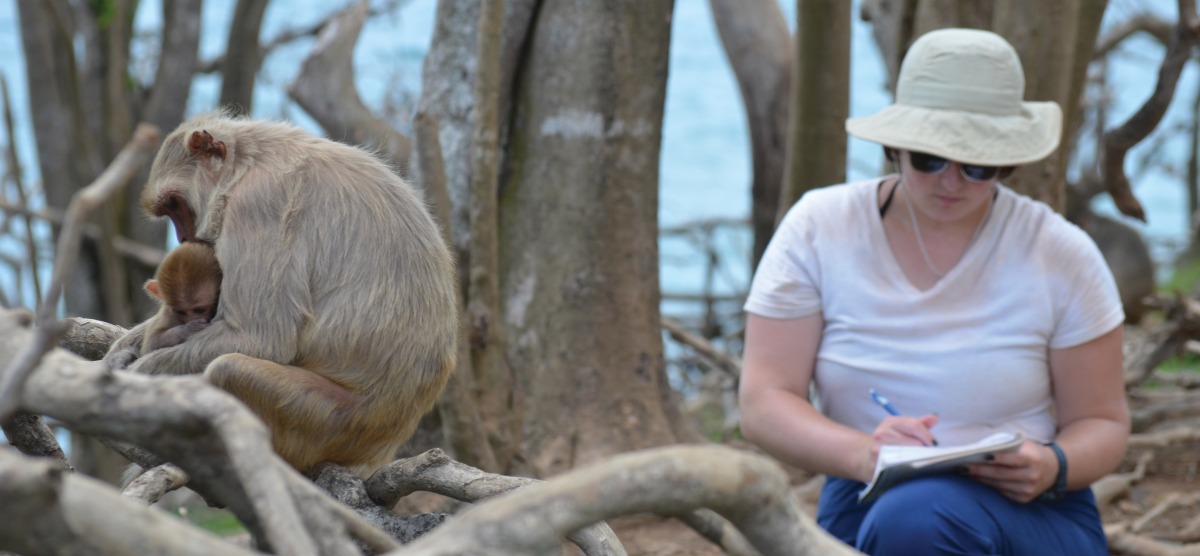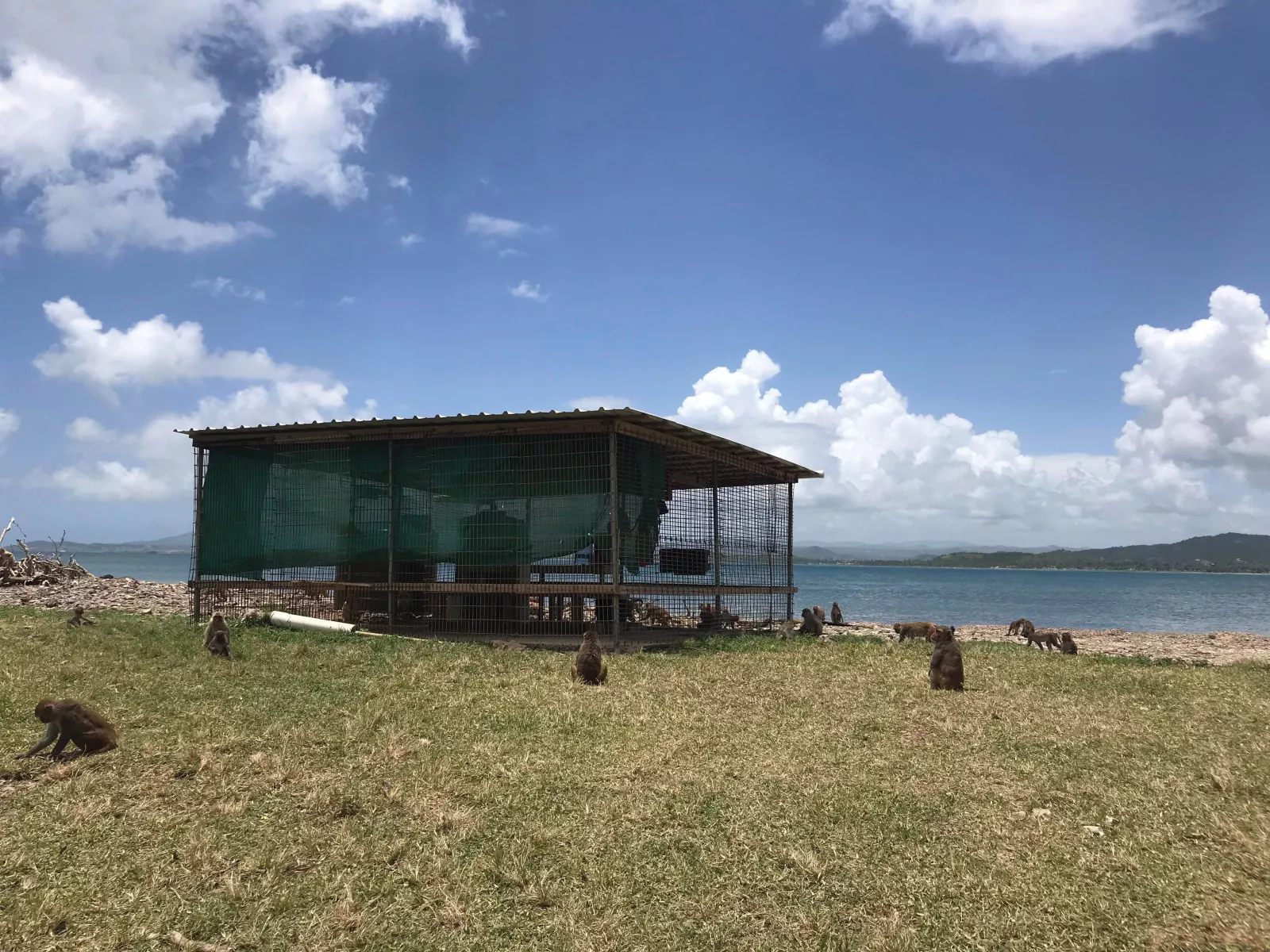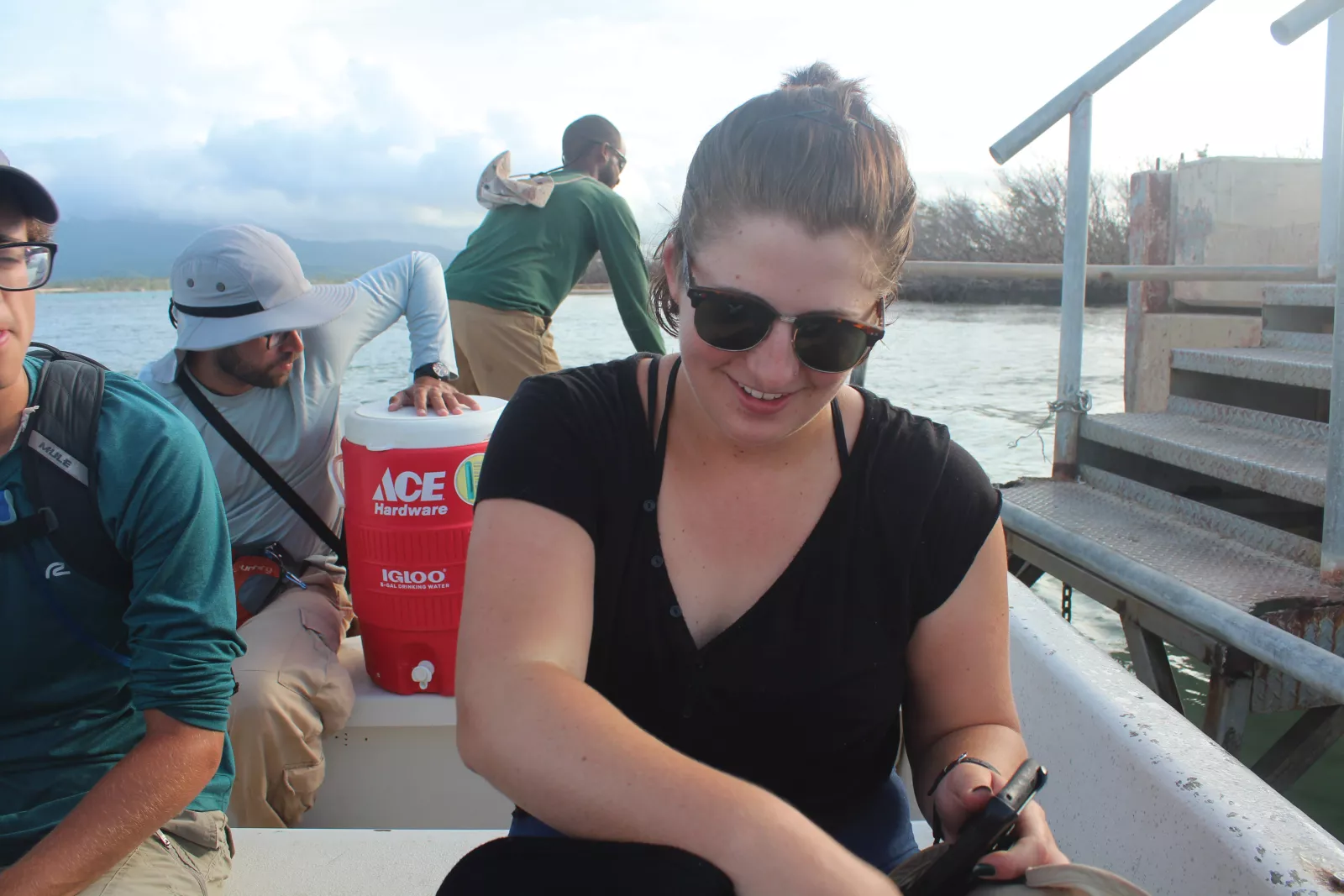
A Day in the Life
For student researcher, observing monkeys is harder than it sounds.
Located on Cayo Santiago, a small island off the southeastern coast of Puerto Rico, the Caribbean Primate Research Center (CPRC) is home to more than 1,000 rhesus macaques.
In the 1930s, researchers established the colony to provide an efficient way to study primate behavior. Today, researchers descend on Cayo to watch monkeys and record their behavior. Among those researchers this summer was Hanna Meyer ’19, whose internship found her spending five days a week collecting data for University of Exeter primatologist Lauren Brent.
“The work is harder than it sounds,” says Meyer. “Watching an individual monkey for 30 minutes to several hours at a time requires a tremendous amount of focus and energy. The monkeys move fast, can easily fit under branches and bushes that are impossible to penetrate if you’re above two feet tall, and can be very difficult to tell apart from their companions.”
Notes from the Field
6 a.m. / Reveille: Wake up and head for the dock, which is only a few blocks away from my apartment. (The beach itself is just one block away, and Cayo Santiago itself can be easily seen from my porch.)
6:50 a.m. / To the Island: Arrive at the dock (which has been stripped down to its frame by Maria) to meet the other researchers; the CPRC staff (a vet, census takers who keep track of the wellbeing of the monkey population, etc.); and the boatmen who operate the motorboat, feed the monkeys, and maintain the island.
The ride is about five minutes. There are usually fewer than 10 people on the boat—which is good because it's a very small motorboat. Once on the dock, we sanitize our shoes to prevent the introduction of outside germs or diseases to the monkeys. After this, everyone goes into an equipment shed to fill their water bottles and get ready for the day.
7 a.m.–Noon / Observations: Every day my goal is to collect observations from six monkeys. A random number generator determines which section of the island I select a monkey from. At the beginning of each observation, I hike to a point along this transect and choose an individual. Generally I choose the first monkey I see, provided I haven’t already followed it that week. Then for 30 minutes I follow that individual, identifying its unique three-character ID, collecting data at five-minute intervals, recording behavior, location (in a vegetated or de-vegetated area), GPS coordinates, clique, size, etc. Essentially I spend my day following at least six individuals (up hills, through brush and mangrove trees, through a swamp) for 30 minutes at a time. Most other researchers also collect fecal samples, but luckily my data is just observational!
Noon / Lunch: We eat in the lunch cage—with a picnic table inside that keeps the monkeys away from us and our food. Though we have a beautiful view of the water and mainland Puerto Rico, it is often obstructed by the faces of curious monkeys, sitting on the outside of the cage to watch us eat.
12:30 p.m. / More Observations: The monkeys are so used to the presence of researchers that it is not uncommon to hear stories of personal interactions—for example, one day, a juvenile came over to sniff my shoelace. It’s great that they are fairly comfortable with researchers, as we need to get fairly close to observe them, but we try to keep interactions to a minimum. Not only could these types of interactions negatively impact data (we don’t want to change the way they naturally behave), but they can be dangerous.
It is normal to receive “threats” from the monkeys, particularly juveniles, adult males, and infant-carrying mothers, but every once in a while a researcher will be jumped on, scratched, or bitten. These experiences usually end with a trip to the hospital, as rhesus macaques are carriers of the herpes B virus, which can be fatal to humans. As scary as it sounds, a herpes B-related death has not occurred in more than 20 years, and the chance to get to work with free-roaming rhesus macaques is completely worth the risk.
2–2:30 p.m. / Home Again: We meet the boatmen in the shed, walk to the dock, sanitize our shoes, and head back to Punta Santiago.
Published on: 11/19/2018

